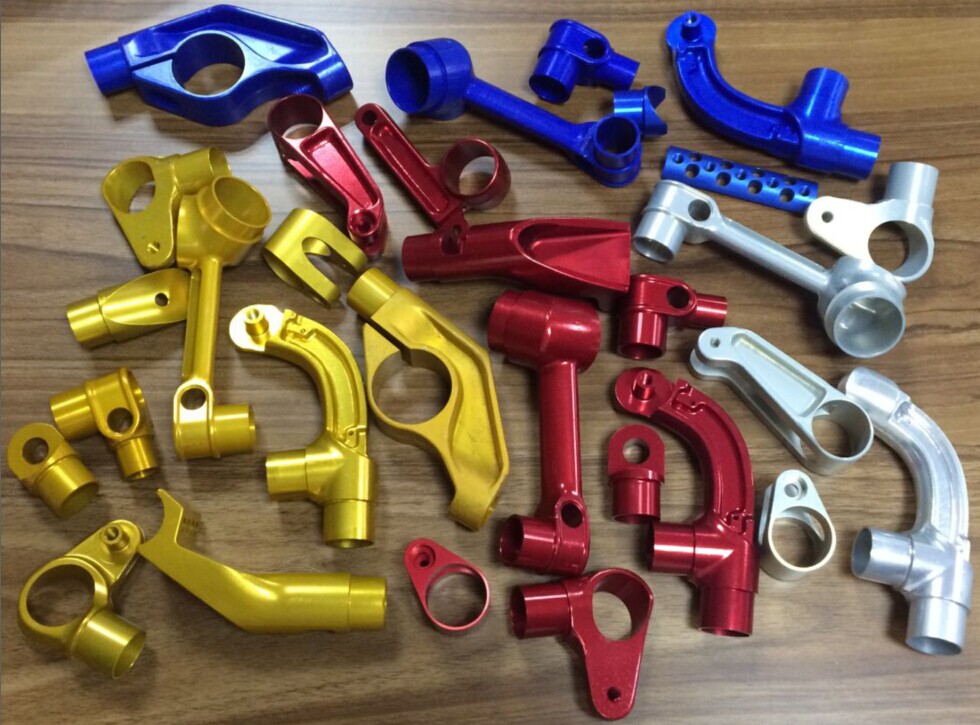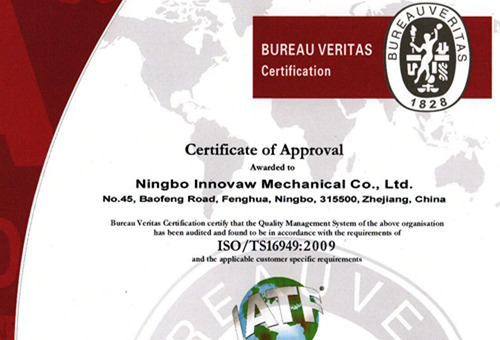Experience in Structural Design of Aluminum Alloy Die Castings
1.Consider the problem of wall thickness, the thickness of the gap over the General Assembly will have an impact on the filling.
2.Consider the release problem, which is very important in the practice of die casting, the reality is often such a problem, which than the injection mold release hate more, so the draft angle setting and dynamic mold release force calculation To note that the general draft angle of 1 to 3 degrees, usually taking into account the smoothness of the mold, the outer draft than the inner draft of the slope to be smaller, the outer draft also 1 degree, and the inner draft To 2 to 3 degrees or so.
3.The design takes into account the design of the mold, if there are multiple locations of sliders, try to put both sides, it is best not to put the next bit of heart, so long time the slider will be easy to go wrong.
4.Some die casting appearance may have special requirements, such as painting, powder coating, etc., then we should pay attention to the structure to avoid the important appearance of the location, easy to set the gate overflow slot.
5.In the structure as far as possible to avoid the emergence of complex structure of the mold structure, such as, had to use a number of sliders or spiral sliders and so on.
6.For the need for surface machining of the parts, pay attention to the need for parts in the design to the appropriate machining allowance, not too much, otherwise the processing staff will call you, and will be exposed inside the pores are not too little , Or coarse fine positioning of a processing, too, black did not kill, you wait for a spark on the mold, and that how much, keep the best not more than 0.8mm, so that the processing of the surface can not see the basic porosity, because there is a hard layer of protection.
7.Then there is attention to the election material, and is used ADC12 or A380, to see the specific requirements.
8.Aluminum alloy is not flexible, to do only with the plastic button.
9.Generally can not do deep hole! In the open mold only point the hole, and then in the second drilling!
10.If it is thin-walled parts can not be too thin, and must use ribs, increase the bending ability! As the temperature of aluminum castings to 800 degrees Celsius! Mold life is generally shorter than the general, such as the motor shell, then only about 80K on the end!
1.Die casting design and plastic parts design is similar to some of the plastic parts of the design is also applicable to die casting.
2.For aluminum, mold temperature and pressure than the plastic is much larger, the design of the correct requirements of special strict. Even if the mold material is very good, once there is welding, the mold is almost no life at all. Zinc alloy with plastic almost, mold life is better.
3.Can not have concave corners, to avoid mold collapse angle.
4.Although the precision of die casting is relatively high, but worse than plastic, and the draft force than plastic, usually the structure can not be too complicated, if necessary, the complex parts should be broken down into two or more pieces.
5.Aluminum alloy screw hole is usually only do conical hole, the use of post-processing. For the requirements of the strict cooperation with the site is usually 0.3mm after the processing capacity.
6.Aluminum alloy die-casting easy to produce porosity, in the appearance need to be considered.
Aluminum alloy die cast (silicon) surface to do anodic oxidation is difficult, the general time will appear slightly longer black. Aluminum alloy die casting can not do anodizing, can be used fuel injection or spray. Commonly used alloy aluminum 6061,7075, cast aluminum A356 coloring effect is good.
There is no necessary connection between die cast and anodic oxidation. There are many types of cast aluminum, and it is not necessary to select silicon aluminum alloy (Al-Si, Al-Cu, AL-Mg, AL-Zn, etc.). Even if the choice of silicon aluminum alloy, anodic oxidation is not infeasible. In general, aluminum alloy in the alloy more or less contain silicon elements, such as 6061 silicon 0.4 ~ 0.8%, 7075 silicon 0.4%, so the amount of silicon on the alloy anodizing effect is very small (by the way, copper Content of aluminum alloy anodized little effect, but in the hard oxidation, porcelain oxidation, copper, manganese a great impact). However, when the silicon content in the alloy is large (> 7%), the anodic oxidation of the alloy will be affected. Mainly reflected in the oxidation of a longer time, the film appears dark, these problems can be resolved through the process (such as no DC, and pulse current oxidation), which requires surface treatment manufacturers have a certain technical capacity. Therefore, cast aluminum ≠ silicon aluminum alloy ≠can not be anodized.
Besides talking about coloring. Anodizing and coloring of aluminum alloys are two different processes, which are different from blue for steel. Iron and blue is the blue film itself is blue, and the color is carried out immediately after the anodic oxidation, the oxide film itself is colorless and transparent. Aluminum alloy with anodic acid oxide film is most suitable for dyeing, and now more use of organic dye coloring, coloring and then the oxide film closed treatment. Also useful heavy metal salt electrolytic coloring, but according to the requirements of the landlord dyed red more difficult!
Steel parts in the phosphoric acid solution containing chemical treatment, so that the surface of steel to produce a layer of water-insoluble protective film process, called phosphating treatment! It mainly has the following characteristics:
1.Phosphating film surface was gray or dark gray.
2.Phosphating film by filling, oil or paint treatment, in the atmospheric conditions have good corrosion resistance.
3.The film adsorption capacity, often as the bottom of the paint.
4.Phosphating film has a high electrical insulation.
5.After phosphating treatment, the original metal mechanical properties, strength, magnetic and other basic unchanged.
6.Phosphating film has a good lubrication performance.
7.Nitriding parts surface can be protected with phosphating film.
8.Phosphating film is the biggest feature in the steel surface and the shape of the complex steel surface to obtain protective film.
9.The film hardness and mechanical strength is low, there is a certain brittle.
Passivation generally refers to: in order to improve the protective properties of the galvanized layer and decorative properties, the plating into the solution, so that the surface of the formation of a layer of chemical stability of the membrane. After the passivation treatment can improve the protective properties of galvanized layer and surface gloss.
Oxidation is generally divided into: aluminum, aluminum and steel parts of the oxidation, but can achieve the purpose and the solution used is different.






.png)


.png) +86-574-83036520
+86-574-83036520 +86-574-83008051
+86-574-83008051 sales@innovaw.com
sales@innovaw.com

.png)

.png)
.png)
.png)

.png)
.png)
.png)








.png)
